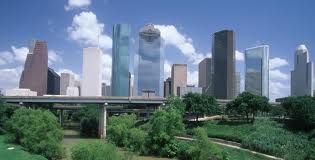Houston, Texas: Beyond Ordinary
 Close your eyes for a moment and consider Houston, Texas. Do you see images of oil rigs? Cattle? Airplanes? Space capsules and astronauts? Railroads? Ships? Skyscrapers? Wide open spaces? Football? Clearly, Houston is a big, bold, and diverse city, and it’s far from ordinary. Below are a few examples of what makes Houston, Texas far from ordinary.
Close your eyes for a moment and consider Houston, Texas. Do you see images of oil rigs? Cattle? Airplanes? Space capsules and astronauts? Railroads? Ships? Skyscrapers? Wide open spaces? Football? Clearly, Houston is a big, bold, and diverse city, and it’s far from ordinary. Below are a few examples of what makes Houston, Texas far from ordinary.
Remember when the Houston Texans used to be called the Houston Oilers? That team’s name reflected one of the industries that Houston, Texas is known for. The Houston Astros’ name reflect the space industry in Houston, Texas. Other big industries in Houston include transporation, ship building, tourism, health care, and technology.
Houston, Texas has long been a transportation hub. In fact, the city seal prominently displays a train engine which reflects the city’s railroad history. Houston, Texas is served by three airports. Its main airport, George Bush International Airport, is the nation’s sixth busiest and the world’s fourteenth busiest airport for passenger traffic.
The Port of Houston is also notable. It is a man-made, deepwater port built in 1914. It is ranked as the first in the United States as far as international tonnage handled goes and second in terms of total cargo tonnage handled.
The city spans over 627 square miles with nearly 600 of those square miles being made up of land and the remaining 27.9 being water. As of the 2010 U.S. Census, over 2.1 million people lived in the city of Houston. Over 6 million people live in metro Houston, Texas.
Even the fountains are unique. For example, the Williams Waterwall is a sculptural, semi-circular fountain that soars 64 feet high with water cascading down its sides. Over 78,000 gallons of water cycle through this magnificent Houston fountain every three hours and two minutes (the water is recycled).
Video Production Plays a Part in Any Online Video Marketing Campaign
Does your business want to start video marketing? Video production and online video marketing go hand-in-hand. After all, if you don’t go through the video production process, you won’t have a video to post online. However, before video production can begin, you must have an in-depth understanding of your prospects.
Marketing Team Houston recommends using the “video to lead” funnel as part of your overall video production strategy. What is it and how does a funnel relate to video production?
The video to lead funnel is a sales process specific to video production. It consists of three phases, Engage, Convert, and Nurture. When you start a video production, you must know which phase the finished video falls in. That phase then drives the direction of the video production. For example, a video production focused on the Engage phase should be informational, interesting, and enticing. At this point, the video production aims to build trust with viewers who have first encountered your company, product, or solution. Many companies make a common video production mistake with their online video marketing campaigns by ignoring the Engage phase and jumping straight into the Convert phase.
The Convert phase of the funnel occurs once viewers have been engaged with your previous video production and trust has been built. Your next video production then focuses on converting these viewers. For example, your video could be focused on demonstrating your product and prompting viewers to request more information or signing up for a special report.
Once prospects become leads, video production addresses the Nurture phase. Videos focused on the Nurture phase should continue informing prospects and position your product, service, or offer as the solution to your lead’s problem.














